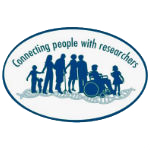Posted by George Shaw on Aug 26, 2016
Newsletter of the National Registry of Myotonic Dystrophy and Facioscapulohumeral Muscular Dystrophy (FSHD) Patients and Family Members. Reprinted with permission.
How common is pain in myotonic dystrophy (DM) and facioscapulohumeral muscular dystrophy (FSHD)?
You’ve helped answer that question!
Registry members have participated in several research studies about pain since 2007. Many of these studies have been led by researchers at the University of Washington and their Rehabilitation Research & Training Center.

A more recent study builds upon these results to further assess pain in Registry members. It was led by pharmacy students and faculty at the Wegmans School of Pharmacy (WSOP) at St. John Fisher College in Rochester, NY.
258 members of the Registry completed this survey last year. Results indicate that 79% of FSHD patients and 68% of DM patients experience pain, similar to the results from the study by the University of Washington. The pharmacy study found that 26% of patients had pain at the time they were diagnosed with DM or FSHD. Of the patients reporting pain, 64% reported having pain symptoms for five years or more and 70% reported experiencing pain within the past month. The most commonly reported locations of pain were the neck, shoulders, and back.
What are some ways that pain can be treated?
The pharmacy researchers report that the most common treatments for pain control (other than medication) in their survey were massage, heat, physical therapy, and range of motion exercises. Over 60% of patients in the survey reported these treatments were somewhat effective to very effective. Patients also reported utilizing medications for pain control with varying degrees of effectiveness. The researchers are currently analyzing information about the prevalence of pain medication use, its effectiveness, common side effects, and adherence. We hope to publish the information and will send another update then!

More research is needed to not only clarify the specific biological mechanisms that cause different pain symptoms, but to identify the specific factors that may worsen pain (e.g., weakness or wasting of muscles and multisystem complications) in DM and FSHD. Research studies are also needed to learn how pain progresses over time and to better assess the risks and benefits of different treatments for pain in DM and FSHD.
Overall a "team-approach" to care is needed to manage pain. The options for treatment range from physical or psychological therapies to medications. Prescription medications can be effective in treating pain, but the more powerful medications, like opioids, are addictive and have life-threatening risks. Treatment options should be discussed amongst your care providers, such as, primary care physicians, physical therapists, pain specialists, neurologists, and family members. A pharmacist can play a vital role to help you manage your medication list, answer your questions, and help serve as liaison with your care providers.
We hope that this survey on pain serves as a first step towards future research and encourages increased collaboration between researchers, care providers, and patients to manage pain.
To learn more, click below:

Summary of Pain Symptoms and Resources for Pain Management from the US National Library of Medicine





Connect with us on social media